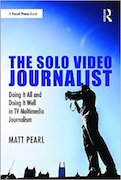A thin layer of pink spreads above the Phoenix horizon. The sun has begun to set, the mountains have turned from sandy orange to muted brown, and the natural light has begun to fade from the window of my hotel room. Lines of cars stretch down Central Avenue, but I cannot hear a sound from the 18th floor.
I sit in antiseptic calm. I wish to return to the chaos of home.
Four inches of snow have pounded Atlanta, cancelling my flight home after a week in Arizona. I will try again the airport tomorrow, but for now I slink back for an unplanned night at a new hotel. I open my laptop and write this entry.
I rarely fall into free time. I typically carve it out, particularly for this blog. February 2018 will mark five years of Telling the Story, and this past year has been my busiest. I began a new role at work, an MFA program at the University of Georgia, and the anticipation of what will keep me even busier in Year 6: our first child.
But I enjoy writing these entries – and interviewing peers and colleagues for the Telling the Story podcast – because of the community they create. I appreciate the e-mail sign-ups, the comments on Facebook, and the notes and Tweets of appreciation. I value the chance to contribute to the continually evolving conversation about journalism, storytelling, and the media industry.
The most popular posts of 2017 reflected that conversation. Here is what saw the most clicks in the past twelve months, with an excerpt:
The MMJ Survey: 8 revealing takeaways about solo video journalists: For too long, the job of a “TV multimedia journalist” has been defined and viewed in its simplest terms … at least by those who have never worked as one.
Outsiders typically view the MMJ as a two-for-one combo package of reporter and photographer. Technically this is true; a one-person crew, by definition, handles the responsibilities traditionally assigned to multiple people.
But solo video journalists face unique challenges not experienced by – and not immediately obvious to – their colleagues in more traditional roles.
I have worked as an MMJ for my entire career, and I currently do so for the NBC affiliate in Atlanta. But I have devoted much time away from the newsroom to shining a light on this widespread yet often overlooked position. I have written about the challenges on this blog, interviewed renowned MMJs on my podcast, and recently authored a book, The Solo Video Journalist, that serves as a how-to guide for one-woman and one-man bands.
My latest offering is aimed not just at MMJs but also everyone else in the newsroom.
In January I conducted the MMJ Survey: I crafted a list of questions designed to get a better understanding of how solo video journalists view their jobs. I heard from 96 MMJs, with diversity in age, gender, and market size. They offered responses that often showed a clear consensus – and unearthed some conclusions that may surprise their newsroom colleagues.
5 lessons from the NPPA’s Best of Photojournalism 2016 winners: Every year I watch the video winners of the NPPA’s Best of Photojournalism awards.
Every year I go back to the same thought:
The building blocks of storytelling are absolutely important to a great piece of journalism, but they require the foundation of a story worth telling.
If we cannot get in the door with meaningful material, we cannot expect viewers to appreciate the various techniques on which we pride ourselves. Last year I profiled several BOP winners on this site and drew lessons from them. In my introduction, I wrote: “The best stories I saw last year demanded my attention, and I watched zero of them on television. I watched all of them online, via links and recommendations from colleagues and friends. I arrived upon them organically and, when I clicked on the videos, found myself instantly engrossed.”
Ditto for 2016. In general, the stories that won BOP awards — and stood out in public as well — were triumphs of content over technique.
I’m a journalist, and I’m going back to school. Here’s why: In my career as a journalist, I have gone through numerous job interviews, as both interviewer and interviewee. I have never heard the following question:
How come you only have a Bachelor’s degree?
Most aspiring journalists try to enter the workforce as soon as they graduate, and they are not required to continue their schooling. Most news managers value experience and performance, and they expect their employees to develop in the “real” world, not the academic world.
Yet here I am, more than a decade removed from my last class at college, going back to school.
This week I officially became a student again, beginning a low-residency MFA program at the University of Georgia’s Grady Journalism School. For the next two years, I will attend several weeks of on-campus classes and meet remotely with various mentors and instructors as I earn my postgraduate degree in narrative nonfiction.
I will also continue to work full-time, marching forward as a reporter at WXIA-TV in Atlanta.
Does it sound like a lot of time? Does it sound like a ton of responsibilities to juggle at once? Does it sound like the type of effort that may go unnoticed by potential employers?
It sure does. But I welcome the challenge.
The Solo Video Journalist is available for purchase. You can find it on Amazon, Barnes & Noble, and the publisher’s web site.
Matt Pearl is the author of the Telling the Story blog and podcast. Feel free to comment below or e-mail Matt at matt@tellingthestoryblog.com. You can also follow Matt on Facebook and Twitter.

